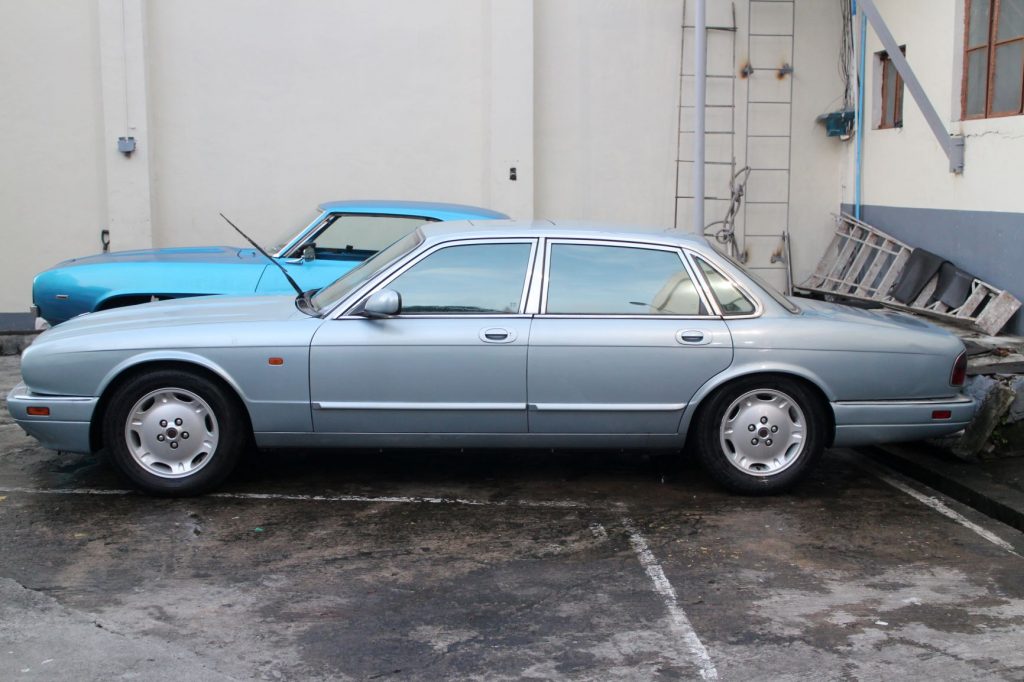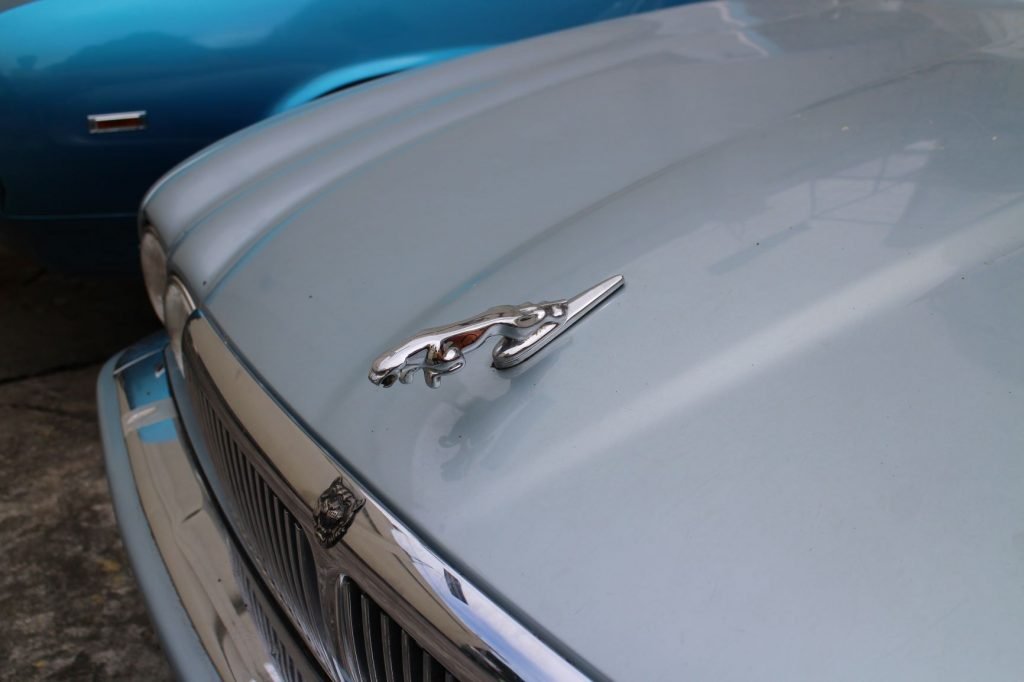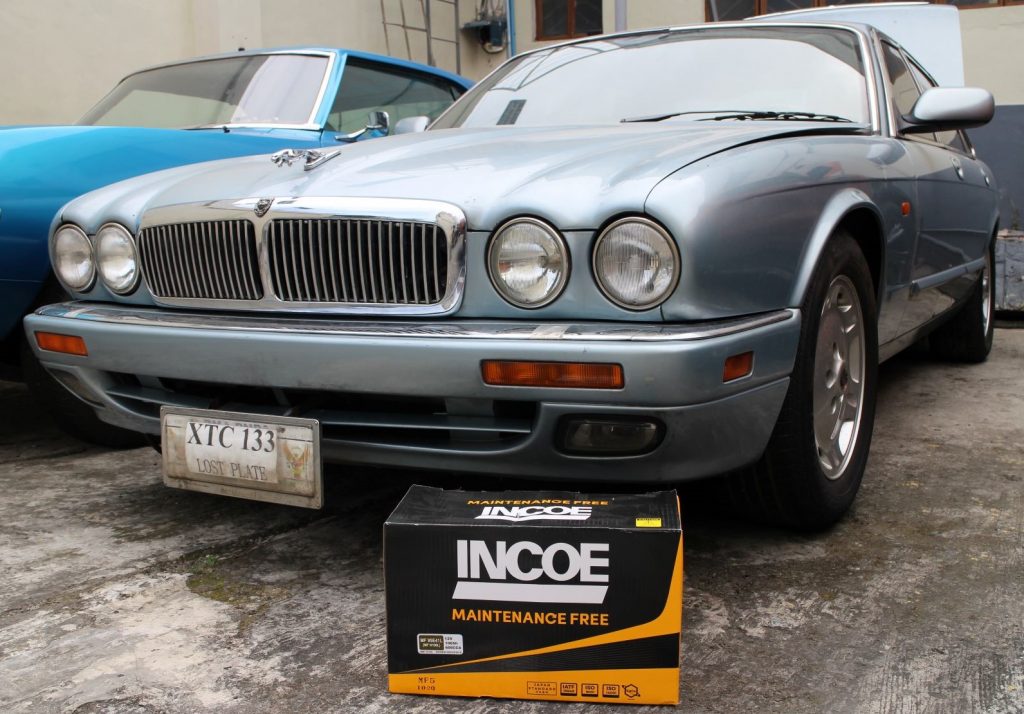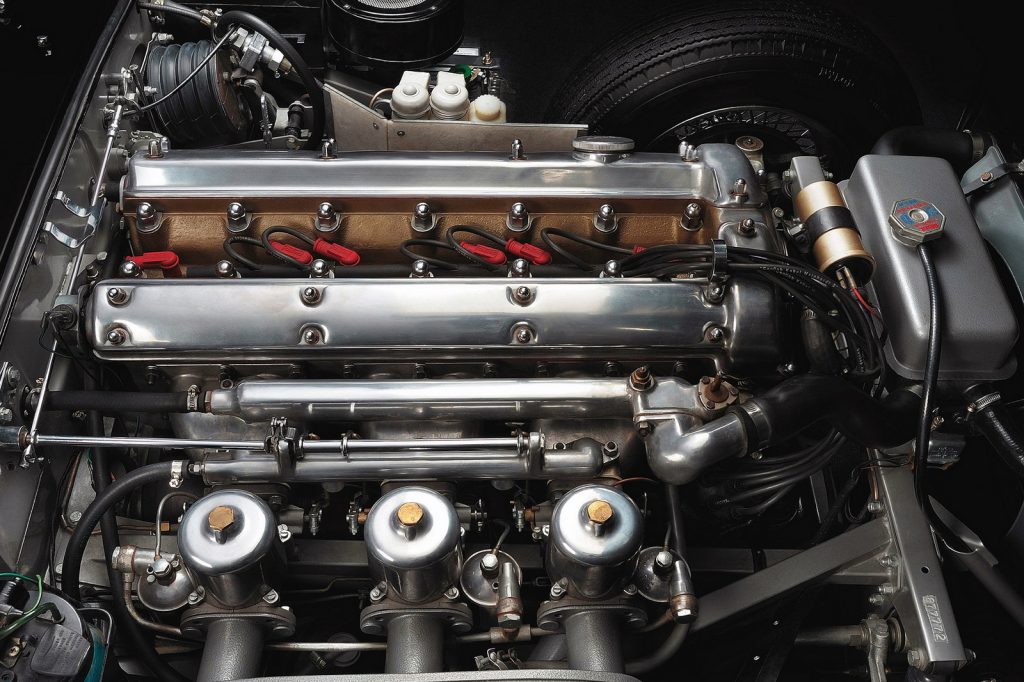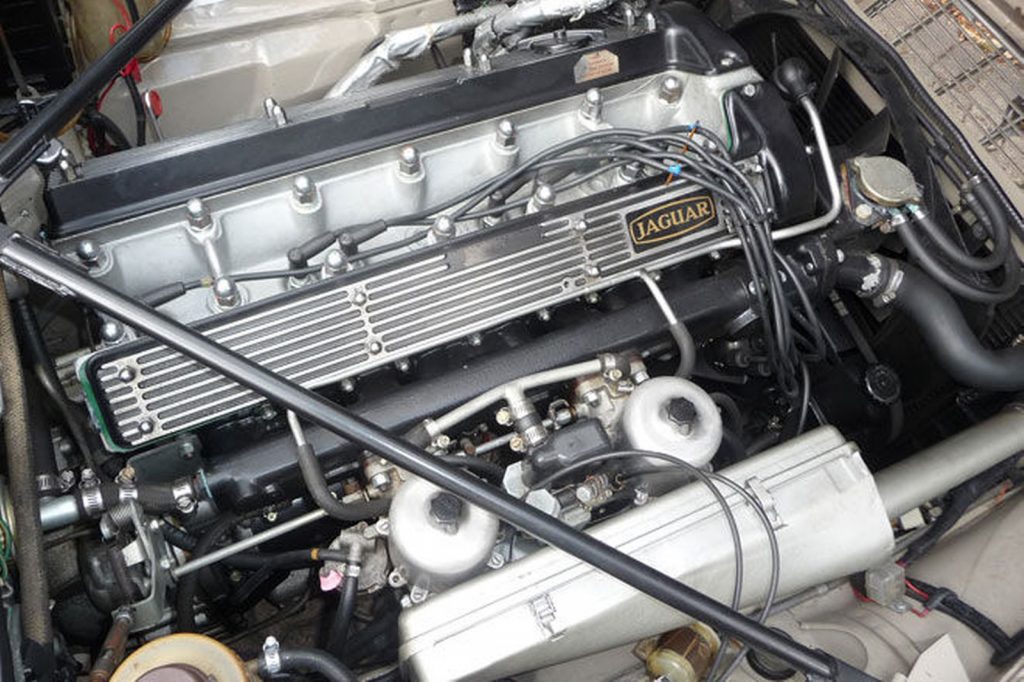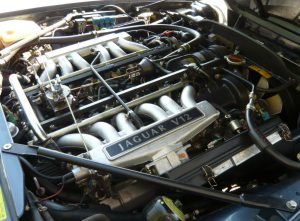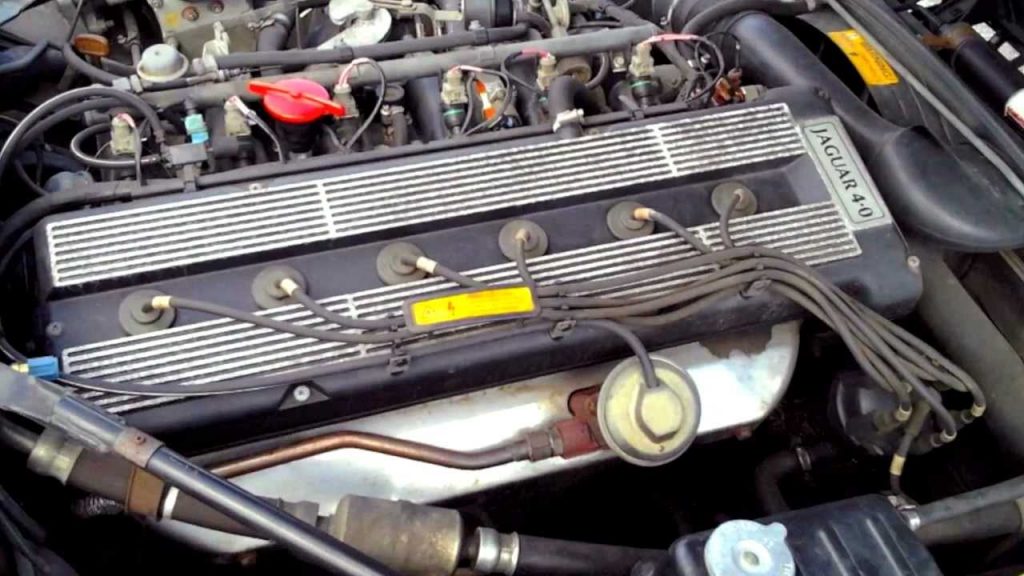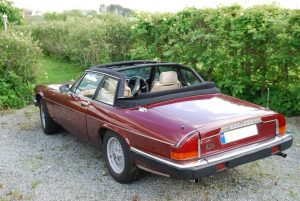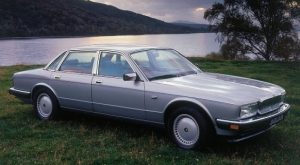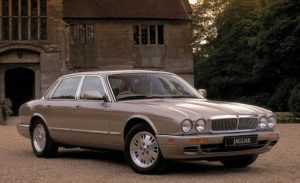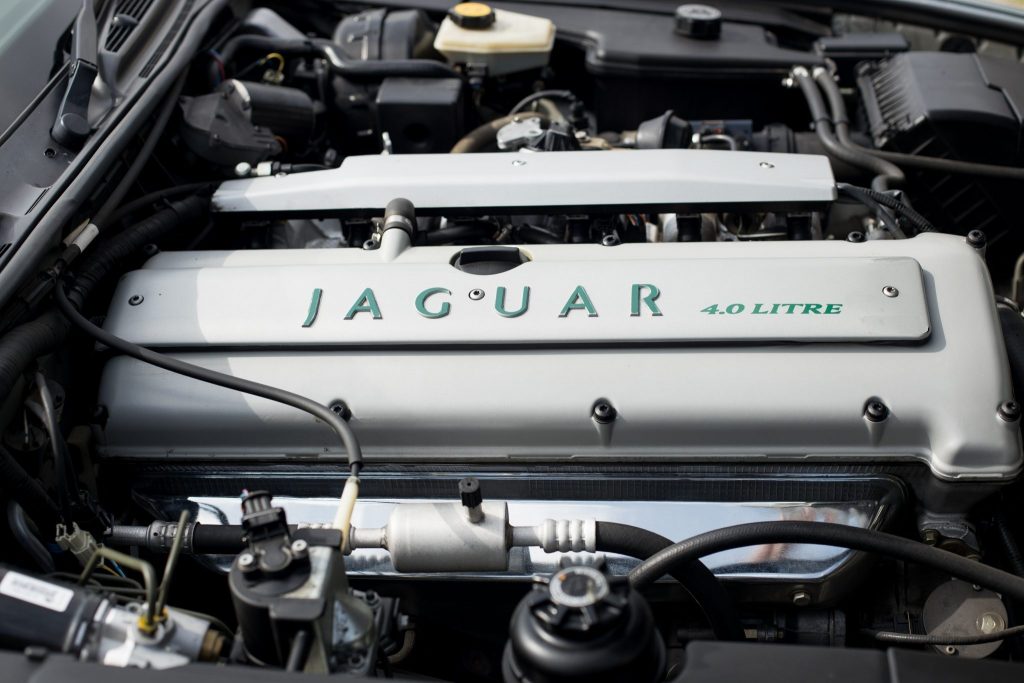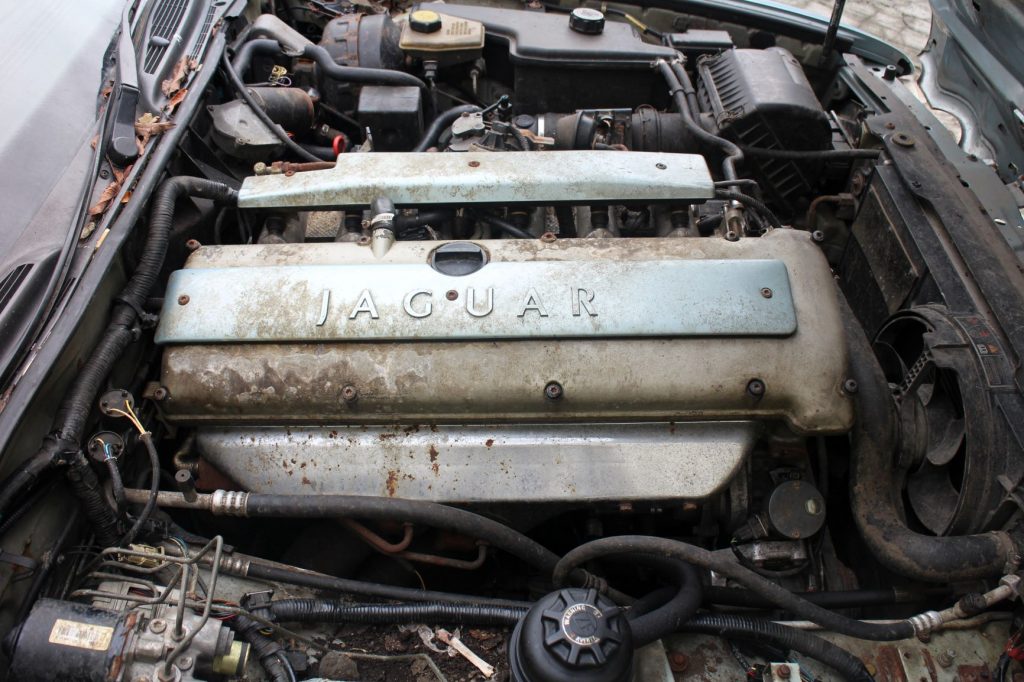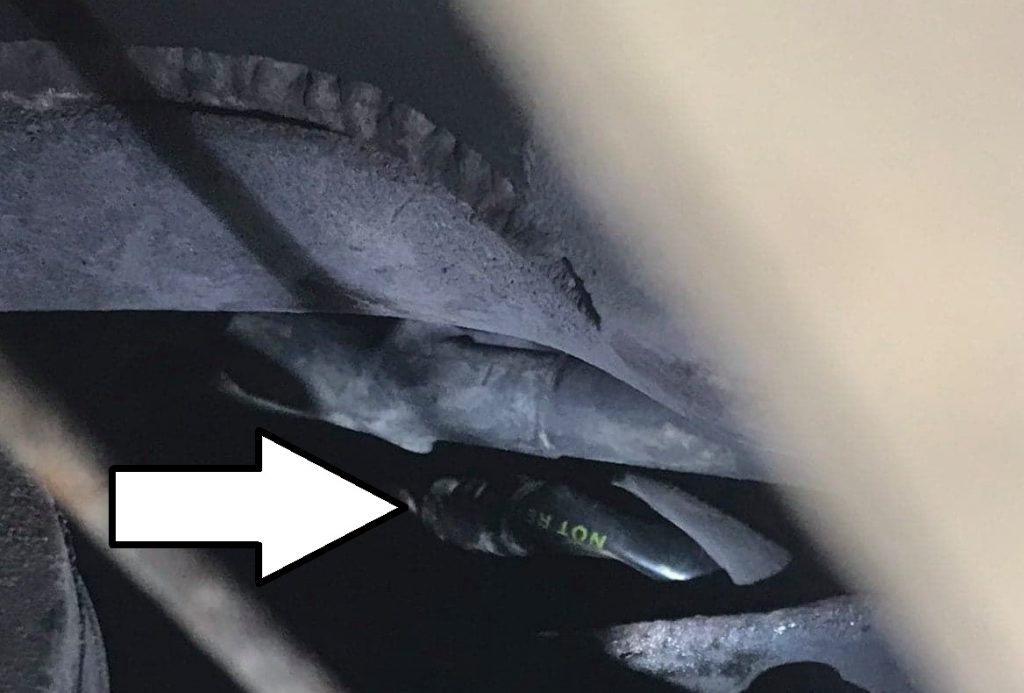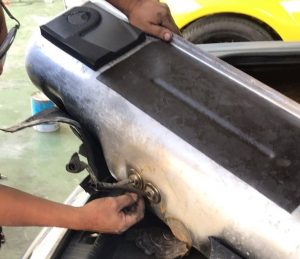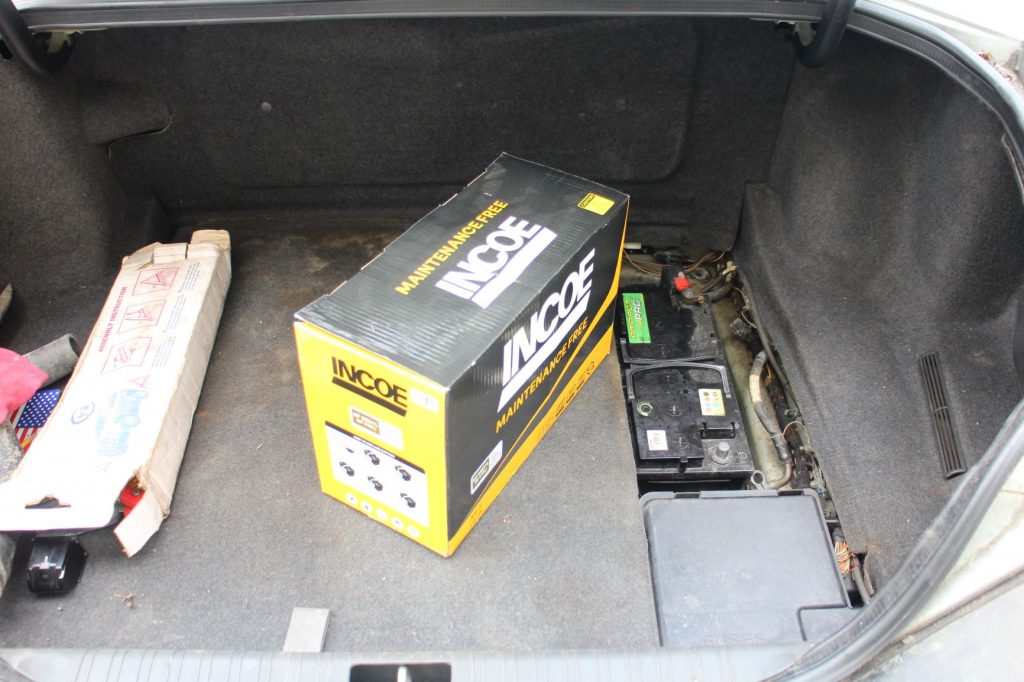In Part 3 of our Power Wheels Magazine Project Car series, we gave our 1995 Jaguar XJ6 4.0 SWB a long-overdue carwash ourselves just so we can remove around three years worth of grime off the Sea Frost Blue paint finish, as well as glide our hands across the British luxury car’s graceful curves. We were able to fix the broken front grille ourselves and recover the missing Leaper hood ornament, which saved us a ton of money. The completed front section restored our Jaguar’s dignified and stately look.
We further saved a ton of money by getting a FREE brand-new INCOE MF-N100L maintenance-free car battery from our good friend, Brian Kaw, whose company distributes the Amaron, Hitachi and Control Plus car battery brands, which we’ve satisfactorily used in our other project cars. However, before we can remove the old Amaron Pro from the battery box at the trunk and replace it with the new INCOE power source, the mechanics at JSK Custom Paint and Auto Works need to sort out the engine wiring and hoses that were chewed by rats.
A Chip Off the Old V12 Block
While downloading the schematic diagram of our XJ6’s electrical system from a website dedicated to Jaguar owners, we learned about the history of our car’s engine. In 1966, Coventry was developing a new 6-cylinder engine to replace its aging XK6 twin-cam straight-6, which has been in use since 1948. Using the iconic Jaguar V12 engine as the base, the factory studied two options – to halve the V12 crosswise and make a V6 or to split it lengthwise to make a slanted inline-6. The V6 option was canned and Jaguar focused on developing the slant-6.
By retaining the slant of the engine at 30º, Jaguar not only saved money by using the existing machine tools for the V12, but allowed a lower overall height with the low hood line. By 1972, tests showed the slant-6 engine churning out 171 horsepower at 5,500 rpm while engineers reduced the angle of the engine slant to 15º, which gave sufficient hood clearance and access to the bottom part of the engine. With an advanced lightweight aluminum alloy engine block and chain drive for the twin overhead camshafts (compared to the XK6 with cast iron block and toothed belt), it was named “Advanced Jaguar 6-Cylinder” or AJ6.
Evolving from AJ6 to AJ16
In 1979, a 3.6-liter AJ6 engine with 4 valves per cylinder (24-valve), double overhead cams (DOHC) was completed but production was delayed until it was unveiled with the 1983 Jaguar XJS Cabriolet. The AJ6 was subjected to continuous development and refinement until it was installed in the new 1986-1993 Jaguar XJ6 (XJ40). In 1989, the 3.6-liter AJ6 got a longer stroke (from 92 to 102 mm) that increased the displacement to 3,980cc (4.0-liter). It also featured revised cam profiles and tappets, a better exhaust downpipe system, and a new engine management system.
The first Jaguar that the Ford Motor Company managed after it took over the factory in 1989 was the 1994-1997 X300 (our project car) but it was the Jaguar engineering team that further developed the AJ6 and gave it a new designation as the AJ16. It retained the same 91mm bore, 102mm stroke, and 3,980cc displacement but received revised inlet and exhaust ports, new cams with higher lifts, 10.1:1 compression ratio, new cylinder head, lighter pistons and valves, coil-on-plug direct ignition, and a new General Engine Management System (GEMS) that allowed fully sequential fuel injection and advanced engine sensing.
Last Jaguar Twin-Cam Inline-6
These numerous engine development and refinement gave the AJ16 more peak power and smoothness than the AJ6. The naturally-aspirated 4.0-liter AJ16 produced 249 hp at 4,800 rpm and 392 Newton-meters of torque at 4,000 rpm to give the X300 a 233 km/h top speed. However, to optimize manufacturing costs, Ford opted to install V8s and V6s in succeeding 1998-2003 Jaguar X308 models and the 14-year production run of the AJ6/AJ16 ended in 1996, which gave the AJ16 the distinction of being the last twin-cam inline 6-cylinder from Jaguar.
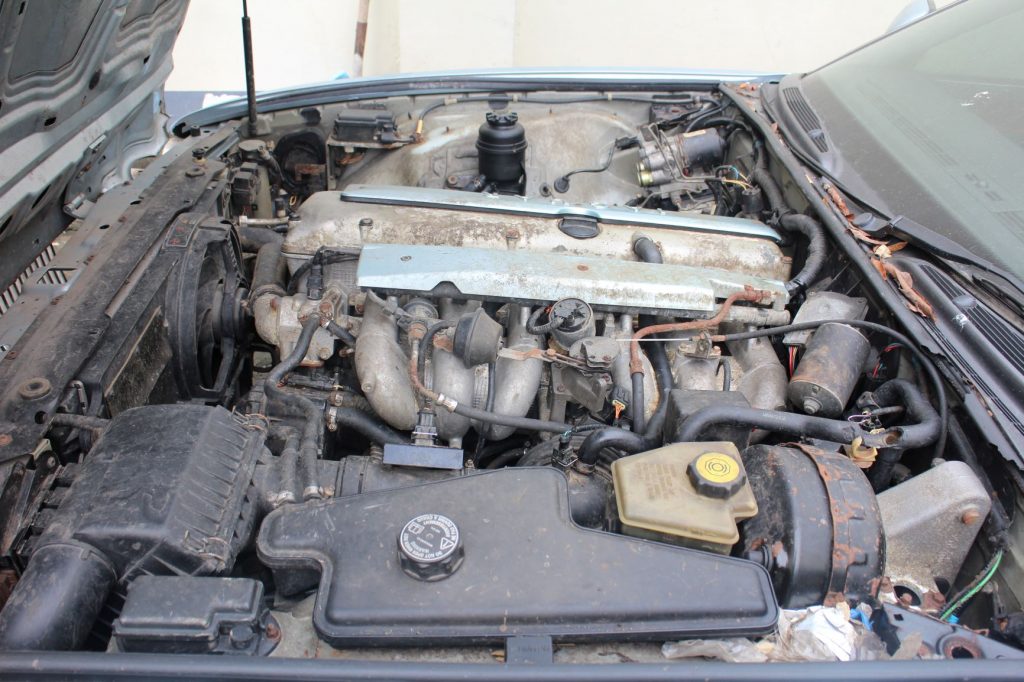
Rats chewed on wires and rubber hoses, which need to be traced and repaired before starting the engine.
Unfortunately, before we can experience all that Jaguar 24-valve twin-cam inline-6 smoothness and power, we have to get the 4.0-liter AJ16 in our XJ6 running first. Johnson Tan, the proprietor of JSK Custom, reported that his mechanics had to remove the fuel tank to repair a leak from a rubber hose that was chewed by rats. The broken hose leaked fuel dangerously near the exhaust system, which could lead to a fire. Since the fuel tank was out, it was subjected to a thorough clean and inspection and the stale fuel was drained completely.
Purring Back to Life
After the fuel leak was repaired and the tank cleaned and reinstalled, the JSK lead mechanic, Eduardo, traced all the wires and the rubber hoses in and around the engine compartment to check which ones needed repair or replacing. Once all the chewed wires were reattached or re-taped, and all the chewed rubber hoses replaced, the INCOE car battery was installed to power the engine management system, which allowed Eduardo to check all the electronic components and sensors.
After checking the engine oil and all the vital fluids, Eduardo cranked the engine with the ignition disconnected just to lubricate the rotating assemblies before actually firing up it up. He then re-checked all the wires and hoses, and poured some gasoline into the tank. He reconnected the ignition, made a remote starter, and almost immediately, the engine purred into life. VROOM! It ran and began purging more than three years of neglect and inactivity out of its mufflers.
After checking every component to see if the engine is working properly, the JSK mechanic checked the brakes and power steering for leaks and found none. Then, they checked the automatic transmission fluid (ATF) level of the ZF 4HP-24 4-speed A/T and then looked underneath for tell-tale signs of fluid leaks before they decided to shift it into gear and drive our Jaguar back-and-forth in the JSK workshop. Since we were not around when they did that, Johnson sent us a video that got our heart racing. Our Jag is not only alive – it now runs! Yippee!
 Power Wheels Magazine A Notch Above
Power Wheels Magazine A Notch Above

